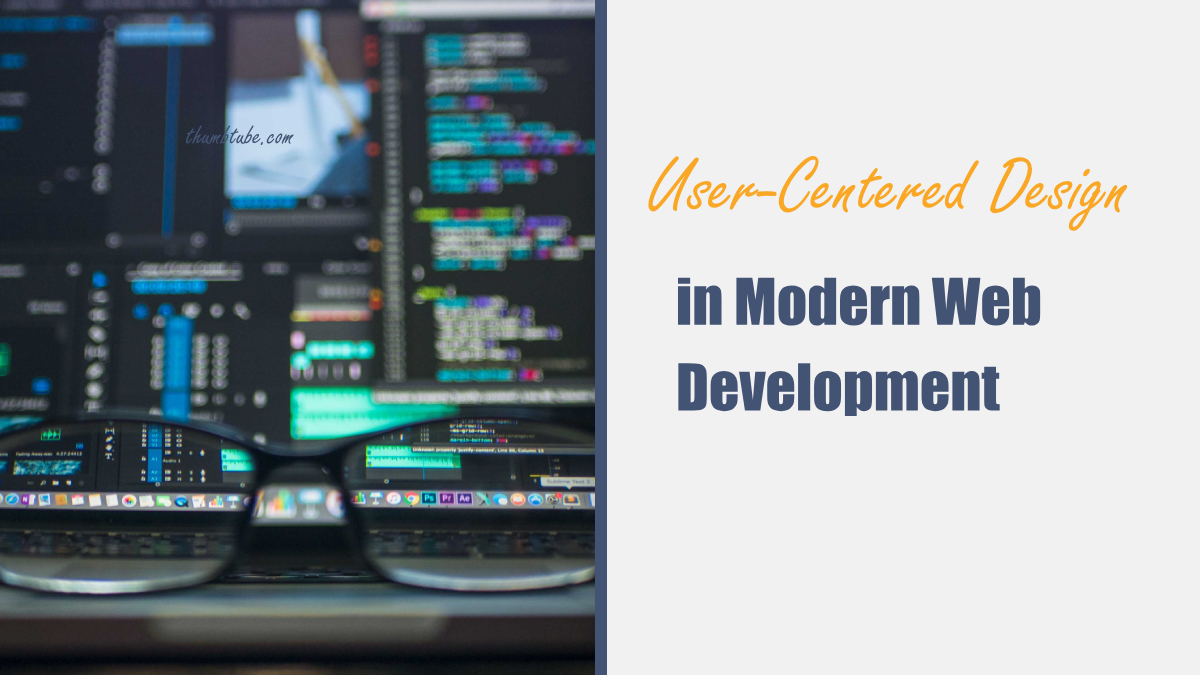User-centered design (UCD) is a framework in modern web development that places the user at the forefront of the design and development process. It’s more than a methodology; it’s a philosophy that permeates every aspect of creating websites, starting from the concept to its implementation and even continuous improvement. User-centered design hinges upon understanding the user’s requirements, preferences, and behaviors to craft web solutions that are not only functional and efficient but also intuitive and enjoyable to navigate like are those that are easily accessible and affordable websites in Perth.

The Evolution of Web Development and the Rise of User-Centered Design
Over the decades, web development has undergone significant advancements, shifting from simple static web pages to intricate interactive web applications. During the days of the Internet, developers and designers primarily focused on aesthetics and functionality without much regard for how end users would experience their creations. However, as online platforms became a part of our lives with an ever-growing number of users, it became evident that the success of a website relied not only on its functionality or visual appeal but also on its usability and the overall experience it delivered to users.
Understanding User-Centered Design
User-centered design is a process that involves users throughout the stages of website development. It follows an approach that includes the following key phases:
- Research and Understanding: This phase focuses on gathering insights about the users, such as their needs, preferences, behaviors, and challenges. Common techniques include user interviews, surveys, and usability testing.
- Design and Prototyping: Based on the gathered insights, developers and designers create prototypes that represent versions of the website or application. These prototypes are continuously refined based on user feedback.
- Evaluation: Once the final design is implemented, it doesn’t stop there. Continuous evaluation and user feedback are essential for improvements.
The Benefits of User-Centered Design in Web Development
Implementing a user-centered design approach offers several benefits:
- Improved User Experience: Websites designed with the user in mind are more intuitive and easier to navigate, leading to a better overall user experience.
- Increased Engagement and Conversion: A user-friendly website can lead to higher engagement, lower bounce rates, and improved conversion rates.
- Enhanced Accessibility: UCD encourages designing for diverse user groups, including those with disabilities, thereby making web applications more accessible to a broader audience.
- Competitive Advantage: A website that offers a superior user experience can set a company apart from its competitors.
Implementing User-Centered Design in Web Development
Bringing User-Centered Design (UCD) into practice necessitates a shift within an organization. It entails collaboration across fields, such as design, development, marketing, and customer service. Key strategies include:
- Building a Diverse Team: Forming a team with members possessing skills and perspectives enhances the understanding and addressing of user needs.
- Continuous User Research: Conducting research is essential to stay updated on users evolving needs and behaviors.
- Iterative Design and Testing: Embracing an approach allows for continual product refinement using popup templates based on user feedback.
- Involving Stakeholders: Ensuring involvement from all stakeholders, including management and end users, guarantees alignment and support throughout the process.

Challenges and Considerations in User-Centered Design
While UCD offers benefits, it also poses challenges:
- Striking the Right Balance: Finding the equilibrium between fulfilling user needs and achieving business objectives is crucial.
- Resource Allocation and Time Constraints: Implementing UCD may require resources and time compared to design approaches.
- Addressing Diverse User Preferences: Meeting the preferences and abilities of users can be demanding.
- Data Privacy and Security: Collecting and using user data must be done responsibly, respecting privacy and security concerns.
The Future of User-Centered Design in Web Development
Looking ahead, the future of user-centered design (UCD) in web development will be greatly influenced by emerging technologies and evolving user behaviors. Artificial Intelligence (AI) is at the forefront of this transformation, enabling intuitive web experiences through predictive analysis and data-driven customization. The rise of voice and gesture-based interfaces is reshaping how we interact with technology, making it natural and human-centric. This shift is significant as it aims to make technology accessible to an audience.
The increasing focus on design highlights the importance of optimizing web solutions for different devices, particularly smaller screens. Functionality and user experience are prioritized to ensure interactions across platforms. As these technologies continue to advance, UCD methodologies will adapt accordingly. Designers and developers need to embrace innovative approaches that meet the changing expectations of users.
User-centered design in modern web development prioritizes usability, accessibility, and user experience to create intuitive interfaces. Learn more about best practices and strategies here.
Conclusion
User-centered design (UCD) represents a shift in web development where emphasis is placed on enhancing the user’s experience rather than solely focusing on technological advancements.
This shift, in perspective, involves having an understanding of what the end users want and prefer and how they behave. It ensures that web solutions are not just technically solid but also deeply resonate with users on a level. Prioritizing the User Centered Design (UCD) encourages the development of web interfaces that are not only functional and efficient but also enjoyable and easy to navigate. This approach enhances user engagement, satisfaction, and loyalty, resulting in user retention and conversion rates.
As the digital landscape continues to evolve with new technologies and user behaviors emerging, the significance of UCD grows even more. Businesses that embrace this approach can stay ahead by creating web experiences that are both cutting-edge in terms of technology and deeply connected to their user base. In an online world, adopting UCD becomes crucial for businesses aiming to stand out from the crowd and create meaningful online experiences that truly resonate with their customers. This user-centric approach is key to developing web solutions that not only meet but exceed user expectations while fostering an engaged community of users.
